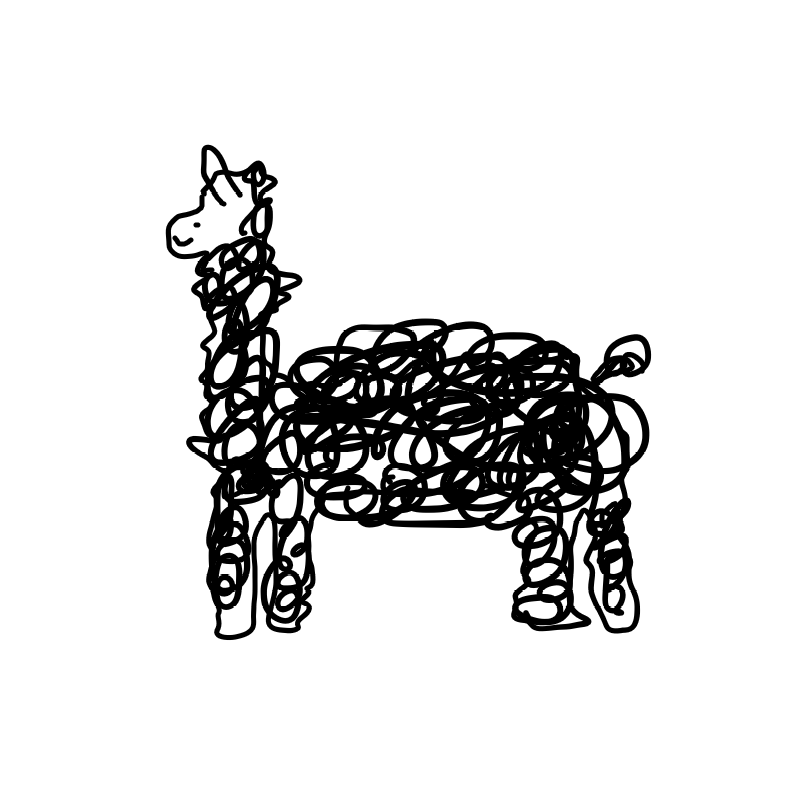541. Reverse String II
Given a string s and an integer k, reverse the first k characters for every 2k characters counting from the start of the string.
If there are fewer than k characters left, reverse all of them. If there are less than 2k but greater than or equal to k characters, then reverse the first k characters and left the other as original.
My Answer 1: Accepted (Runtime: 56 ms - 8.48% / Memory Usage: 14.5 MB - 17.63%)
class Solution:
def reverseStr(self, s: str, k: int) -> str:
ans = ''
i = 0
cnt = 0
rev = 1
tmp = ''
while i < len(s):
if cnt < k:
if rev:
tmp = s[i] + tmp[:]
else:
tmp += s[i]
cnt += 1
else:
cnt = 0
rev = not rev
ans += tmp
tmp = ''
i -= 1
i += 1
if tmp:
ans += tmp
return anscnt 로 k 개 만큼 세주면서
rev == 1 이면 reverse 로 tmp 에 저장하고
rev == 0 이면 원래대로 tmp 에 저장해서
ans 에 추가
cnt == k 면 rev 는 0->1 or 1->0 로, cnt, tmp 는 모두 초기화
뭔가 모르겠는 그지같음을 느꼈읍니다...
1192. Critical Connections in a Network
There are n servers numbered from 0 to n - 1 connected by undirected server-to-server connections forming a network where connections[i] = [ai, bi] represents a connection between servers ai and bi. Any server can reach other servers directly or indirectly through the network.
A critical connection is a connection that, if removed, will make some servers unable to reach some other server.
Return all critical connections in the network in any order.
My Answer 1: X
class Solution:
def criticalConnections(self, n: int, connections: List[List[int]]) -> List[List[int]]:
dic = collections.defaultdict(list)
for i in range(len(connections)):
dic[connections[i][0]].append(connections[i][1])
dic[connections[i][1]].append(connections[i][0])
def func(c, nums):
if len(nums) == n:
return 1
if c is None:
return 0
ans = 0
for i in range(len(c)):
if c[i] not in nums:
ans = func(dic[c[i]], nums+c[i])
return ans
self.ans = []
for i in range(n):
for j in range(len(dic[i])):
if func(dic[i][:j]+dic[i][j+1:], [i]) == 0:
self.ans.append([i, dic[i][j]])
return self.ans그래프니까 dic 에 연결된 숫자들 모두 저장
0 ~ n-1 의 숫자로 정해져 있으니까 n 만큼 반복문 돌려서
해당 숫자와 연결된 리스트에서 하나씩 제거한 값을 재귀에 돌림
재귀함수에서는
nums 에 방문한 숫자들을 넣어주면서 파도타기로 어디까지 타고 가나 확인해줌
모든 숫자를 방문하면 return 1
모두 방문하지 못하고 끝나면 return 0
방문했던 숫자는 보지 않도록 처리
라는 아이디어만...^^
1시간 짜리인데 미듐도 아니고 하드가 뭐죠..?
Solution 1: Accepted (Runtime: 2164 ms - 92.06% / Memory Usage: 65 MB - 97.04%)
class Solution:
def criticalConnections(self, n: int, connections: List[List[int]]) -> List[List[int]]:
graph = [[] for _ in range(n)]
currentRank = 0
lowestRank = [i for i in range(n)]
visited = [False for _ in range(n)]
for connection in connections:
graph[connection[0]].append(connection[1])
graph[connection[1]].append(connection[0])
res = []
prevVertex = -1
currentVertex = 0
self._dfs(res, graph, lowestRank, visited, currentRank, prevVertex, currentVertex)
return res
def _dfs(self, res, graph, lowestRank, visited, currentRank, prevVertex, currentVertex):
visited[currentVertex] = True
lowestRank[currentVertex] = currentRank
for nextVertex in graph[currentVertex]:
if nextVertex == prevVertex:
continue
if not visited[nextVertex]:
self._dfs(res, graph, lowestRank, visited, currentRank + 1, currentVertex, nextVertex)
lowestRank[currentVertex] = min(lowestRank[currentVertex], lowestRank[nextVertex])
if lowestRank[nextVertex] >= currentRank + 1:
res.append([currentVertex, nextVertex])그래프 만들고 rank 를 잡아주기 => currentRank 와 lowestRank
dfs 돌려서 visited True 로 체크해주고
연결된 숫자들 중에 방문하지 않은 곳으로 currentRank + 1 해서 재귀 돌리기
아니 근데 랭크의 의미를 모르겠음...
낮은 랭크일수록 더 귀하다는...?
